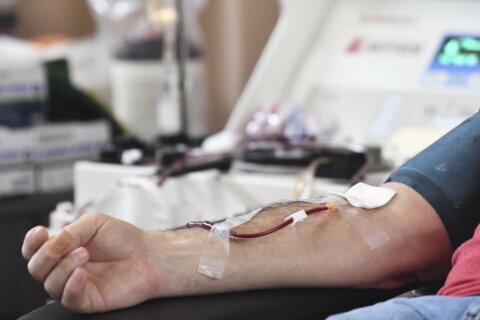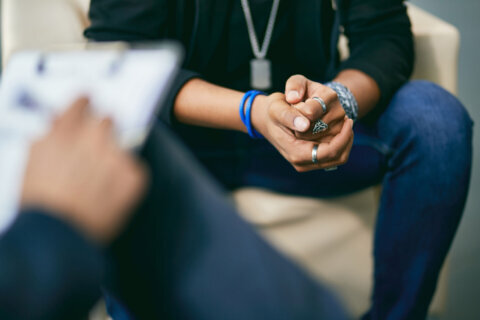All throughout May, WTOP is celebrating Asian American and Pacific Islander Heritage Month with stories about the people and places shaping the D.C. region.
According to the National Alliance on Mental Illness (NAMI), Asian Americans and Pacific Islanders have some of the lowest rates of using mental health services, at 8.9% in 2019.
NAMI points to a number of factors: language barriers, social stigma and a lack of culturally competent providers — those who are familiar with the experiences of the patients they serve.
But there are signs of change.
In Montgomery County Public Schools, Medical Officer Dr. Patricia Kapunan said students, including AAPI students, “talk about mental health with a freedom that we haven’t seen in prior generations.”
Kapunan shared an account from one young person who told Kapunan she was surprised by her own father’s openness to getting needed mental health care for a relative. Mental health, she told Kapunan, was something that just wasn’t talked about in her home.
“She didn’t think her father could talk about mental health, but really, she hadn’t had the opportunity to see that,” Kapunan said.
Stereotypes of Asian Americans, such as being tagged as the “model minority,” have put an added mental health strain on the AAPI community, Kapunan said. That can be especially true for Asian American teenagers, who are at a point in life where their school performance is seen as pivotal for their futures.
“There’s increasingly a culture of toxic achievement, where, regardless of its impact on your mental health, you’ve got to try, try, try to be the best,” Kapunan said.
She said some of that is the model minority myth, and some of that is simply expectations that are put on students.
“Those two things are things that we have to be very mindful of,” Kapunan said.
She was quick to point out that, like the Hispanic community, the AAPI community “is not a monolith,” but that there are some common threads, including the reticence to seek professional help. When families do make that decision, another potential barrier is finding someone who shares their experiences as a member of the AAPI community.
While getting care shouldn’t depend on being able to find a mental health provider of the same background, Kapunan said for some patients, including young people, “it’s very, very true that seeing and interacting with trusted adults who look like them removes some barriers.”
Get breaking news and daily headlines delivered to your email inbox by signing up here.
© 2024 WTOP. All Rights Reserved. This website is not intended for users located within the European Economic Area.








